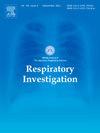Effects of Daikin air purifiers on asthma control and pulmonary function: A multicenter, single-arm, observational pilot study
IF 2
Q2 RESPIRATORY SYSTEM
引用次数: 0
Abstract
Background
While numerous studies, including systematic reviews, have investigated the effects of air purifiers on asthma control in Western countries, there is a paucity of research conducted in Japan. This multicenter, single-arm, observational pilot study examined the effect of air purifiers on asthma control in Japanese patients.
Methods
This study was conducted at the Kyoto University Hospital and the Ayabe City Hospital. The air purifiers (MCK704ABK: Daikin Industries, Ltd., Osaka, Japan) were equipped with electrostatic high-efficiency particulate air filters, capable of capturing 99.97 % of particles ≥0.3 μm. We examined changes in particulate matter (PM) 2.5 levels and forced expiratory volume in 1 s (FEV1) before and after one month of air purifier use.
Results
Eighteen patients (median age: 64 [58, 70] years, 66.7 % female) participated in the study. The median PM2.5 concentration significantly decreased from 4.6 (3.4, 6.9) μg/m3 to 1.4 (0.7, 2.7) μg/m3 after using the air purifiers (p = 0.00042). FEV1 significantly increased from 2.0 (1.7, 2.6) L to 2.1 (1.7, 2.6) L (p = 0.041). The median change in FEV1 after air purifier use was 40 (−22.5, 112.5) mL. Patients with improved FEV1 (ΔFEV1 >0 mL) had a significantly higher frequency of allergen sensitization compared to those without improvement (75.0 % vs. 16.7 %, p = 0.019).
Conclusion
The Daikin air purifiers demonstrated the potential to reduce PM levels and improve pulmonary function and asthma symptoms.
大金空气净化器对哮喘控制和肺功能的影响:一项多中心、单臂、观察性先导研究
在西方国家,包括系统综述在内的大量研究调查了空气净化器对哮喘控制的影响,但在日本进行的研究却很少。这项多中心、单臂、观察性的初步研究考察了空气净化器对日本患者哮喘控制的影响。方法本研究在京都大学医院和绫边市医院进行。空气净化器(MCK704ABK: Daikin Industries, Ltd, Osaka, Japan)配备了静电高效微粒空气过滤器,可捕获99.97%≥0.3 μm的颗粒。我们检测了使用空气净化器前后一个月的颗粒物(PM) 2.5水平和1秒用力呼气量(FEV1)的变化。结果共纳入18例患者,中位年龄64[58,70]岁,女性占66.7%。PM2.5浓度中位数由使用空气净化器后的4.6 (3.4,6.9)μg/m3显著降低至1.4 (0.7,2.7)μg/m3 (p = 0.00042)。FEV1由2.0 (1.7,2.6)L显著增加至2.1 (1.7,2.6)L (p = 0.041)。使用空气净化器后FEV1的中位数变化为40 (- 22.5,112.5)mL。FEV1改善的患者(ΔFEV1 >0 mL)与未改善的患者相比,过敏原致敏的频率显著更高(76.0% vs. 16.7%, p = 0.019)。结论大金空气净化器具有降低PM水平、改善肺功能和哮喘症状的作用。
本文章由计算机程序翻译,如有差异,请以英文原文为准。
求助全文
约1分钟内获得全文
求助全文

 求助内容:
求助内容: 应助结果提醒方式:
应助结果提醒方式:


